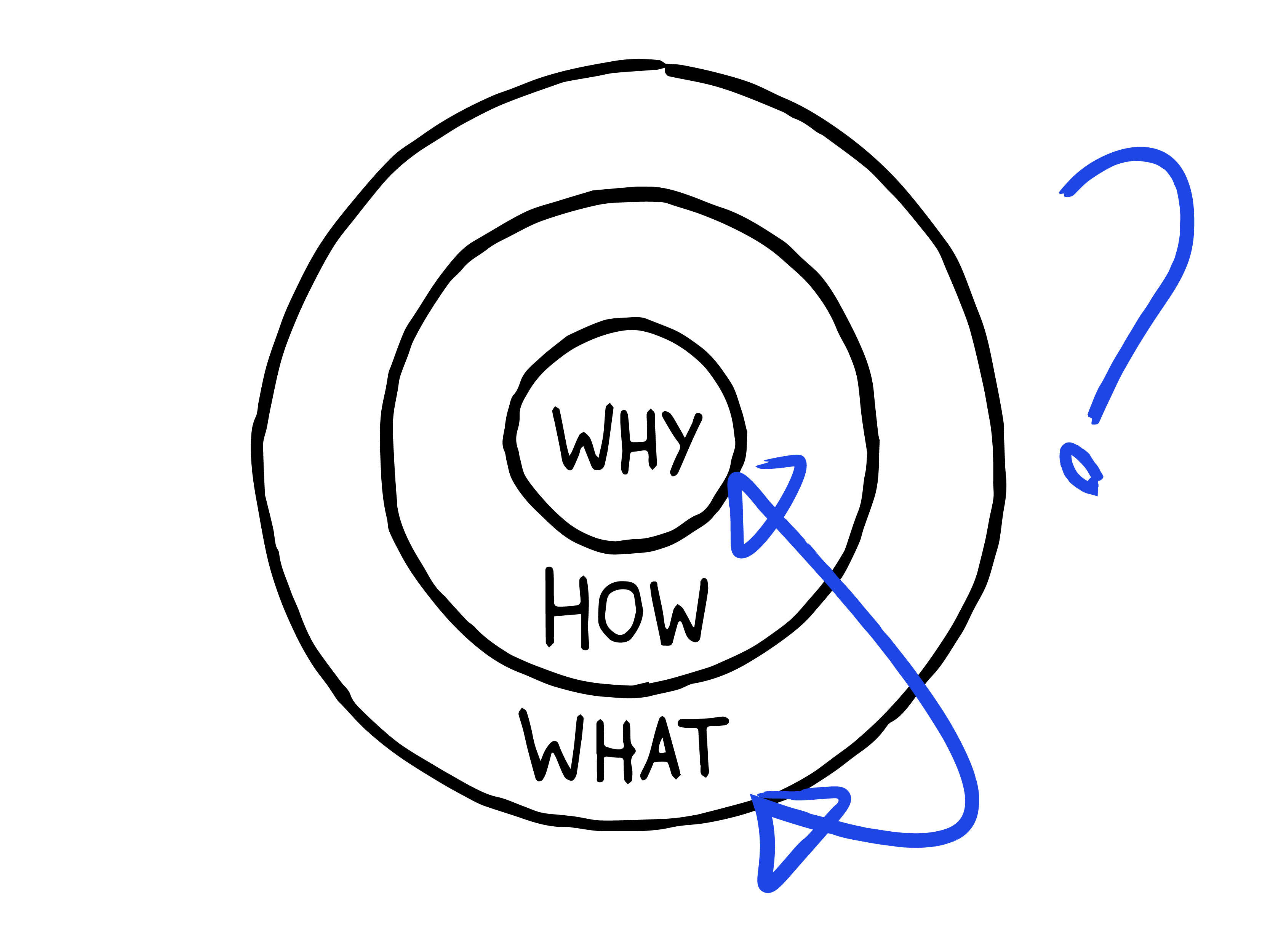
Inverting Sinek’s Golden Circle: why ‘what’ is a better basis for strategy than ‘why’
Simon Sinek’s Golden Circle recommends that you should always start with the inner circle “why.”
Over the years, this has become an accepted belief in strategy. Any organization should start with a clear mission,
vision, goals, "why," set of values, or any other expression of a bigger purpose and that everything else should be
derived from that.
This sounds nice and intuitive. It sounds nice because it make us feel like welldoers who serve a purpose with our
organizations. And it sounds intuitive because everything we do needs to start with a reason, right?
But maybe starting your strategy in this way is not always the best idea. Instead, there are good reasons to argue
that starting with the value that you offer through your products and services is generally a better idea. Why?
Let me start with a bit of history to explain why the idea that everything should start with a bigger goal is so appealing.
History and limitations of the ‘why’ idea
Sinek’s focus on “why” reflects what is called "teleological" thinking. As Wikipedia tells us “Teleology or finality
is a reason or explanation for something in function of its end, purpose or goal. It is derived from two Greek words:
telos (end, goal, purpose) and logos (reason, explanation).” It means we do and explain things by relating it to some
future end, goal or purpose.
This idea goes back to the Greek philosophers Plato and Aristotle. It contends that we always start with a goal before
we do something. So, if we walk somewhere, we do this because we have a particular goal in mind and if we think about
something we also do so because of certain goal.
Teleological thinking is all over the place. We are told to think first before we act and set clear goals and milestones
before we embark in a project. And in strategy we hear it all the time. The whole idea of traditional strategy is that
we think things up first before we act: first formulate, then execute.
But is this really helpful, possible, or the best way? Science shows us that there is no real evidence that it is.
Research has not demonstrated that starting with clear goals, objectives, purpose, etc. really works. And because
often large amounts of time, effort and resources are spent on creating compelling mission and vision statements,
goals and strategic plans, the opportunity costs of doing so are substantial.
When you think about it, assuming that our own goals matter most in leading a business is actually quite egocentric.
Why would these matter most? Why, for example, would Steve Jobs’ desire to "put a ding in the universe" (as Simon
Sinek summarizes it) be a good basis for an organization and its strategy? We could also see it as a megalomaniac
striving for immortality through his ideas and products.
Shifting perspective: from ‘why’ to ‘what’
If we accept that an organization’s reason of existence is value creation, then its offerings—its value-added products
and services—are its main starting point. After all, it is through its offerings that an organization creates value
for others; for its customers, other stakeholders or society at large. If we take this seriously, it means that when
we make strategy, it is our offerings rather than our goals that are the true starting point. So, we start with the
value we create for others rather than with our aspirations.
This is an important shift in perspective. It implies that, rather than aligning everything we do with our “why”—our
bigger goals, objectives, purpose etc.—we align it with the value we create. Accordingly, we shouldn’t worry so much
about whether our resources, processes, people, policies, etc. help us achieve our goals. Instead, we should worry
whether they help us create value through our offerings.
The most interesting and counter-intuitive part of this shift is that it makes the values and goals we have a means
to create value rather than the final end. So, rather than asking whether our offerings help us achieve our goals,
we ask ourselves whether our goals and values help us create valuable offerings. In other words, rather than starting
with "why," we start with "what."
What is ‘agile’ strategy and is it (still) a good idea?
The idea behind agile strategy is not new. You quickly find papers and articles about quality, focus adoption, and transformational agile strategies. But is this move toward “agile” a good idea?
Read article
Here are the 6 essential qualities of a grounded leader
October 30, 2021 — 3 minute read
We need grounded leadership. Thus far, these grounded leaders who have made waves in their industry possess the
six following qualities:
Read article


I am Jeroen Kraaijenbrink and I have been consulting and mentoring CEOs and leaders in strategy affairs for over 10 years.
With my 20+ years venture as an academic in strategy and management theory, I've written several articles to improve your strategy,
management and organization.
Read all articles

I write articles bi-weekly on my newsletter.
Learn about relevant industry
knowledge and strategy and leadership developments by subscribing to my newsletter.
We need grounded leadership. Thus far, these grounded leaders who have made waves in their industry possess the six following qualities:
Read article

I am Jeroen Kraaijenbrink and I have been consulting and mentoring CEOs and leaders in strategy affairs for over 10 years.
With my 20+ years venture as an academic in strategy and management theory, I've written several articles to improve your strategy,
management and organization.

I write articles bi-weekly on my newsletter.
Learn about relevant industry knowledge and strategy and leadership developments by subscribing to my newsletter.

